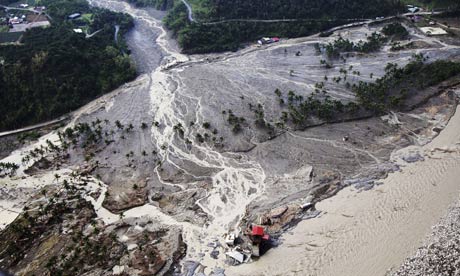
SÃO PAULO -- Having powered its way to the top in U.S. retailing, Wal-Mart Stores Inc. has struggled to extend its dominance across the globe.
But the world's largest retailer is learning in Brazil and elsewhere that the most successful ideas don't necessarily flow from its headquarters in Bentonville, Ark. That has it tailoring inventories and stores to local tastes -- and exporting ideas and products pioneered outside the U.S.
Traffic-choked São Paulo, for instance, proved inhospitable to the kind of vast stores with which Wal-Mart dominates in American suburbs. At the same time, the local-market savvy of Brazilian retailers that Wal-Mart acquired has proved invaluable."What we have learned in the past couple of years is that one size does not fit all," says Anthony Hucker, a British retail veteran now tasked with taking winning Wal-Mart store formats and expanding them globally.
Wal-Mart's challenge abroad is to cater to local tastes for native products that are not popular elsewhere, while still making the most of the global purchasing might that lets its squeeze down its costs.
Finding new frontiers for expansion has become crucial for Wal-Mart. The company reported nearly flat second-quarter earnings Thursday, including a 1.2% decline in sales at U.S. stores open for at least a year. But Wal-Mart said it notched a significantly stronger performance abroad. The company estimated its foreign unit posted a 13% rise in profits for the quarter and a 11.5% increase in sales, if currency fluctuations are taken out of the equation.
And though Wal-Mart's stock rose smartly last year, as its low prices appealed to recession-strapped shoppers, it has slid 7% in 2009 on skepticism about how well it will prosper when the economy and consumers bounce back. The big retailer has been gradually boosting its international spending in recent years, even as it reduces overall capital expenditures. It has estimated it will spend up to $5.3 billion on foreign expansion projects in the fiscal year that began Feb. 1. And that figure doesn't include its splashiest new move, the acquisition of a controlling stake in Chile's largest grocery chain, Distribucion y Servicio D&S SA.
Wal-Mart's international division already includes some 3,700 stores and provides nearly a quarter of the company's $401 billion in annual sales. In all but one of the 14 foreign countries where Wal-Mart International does business, executives say, its sales are growing faster than that country's retail market.
Yet Wal-Mart wants its international business to be much more. It has stepped up spending in China, has struck a retail partnership in India, is exploring possibilities in the Middle East and is planning a move into Russia soon.
Though it puts the Wal-Mart name on many of its stores abroad, it also uses some 60 other names, often those of local retail chains it has acquired. In Brazil, a market Wal-Mart entered in 1995, it now is primarily building small discount stores catering to the emerging middle class, but under the name Todo Dia.
In the city of Carapicuiba on the edge of São Paulo, a gleaming new Todo Dia in a hardscrabble neighborhood pocked with graffiti offers a decidedly Brazilian take on Wal-Mart shopping. A produce section styled after a fruit stand is piled with fresh oranges. A huge display hawks the black turtle beans and salted pork ears needed to cook a feijoada, a traditional Brazilian stew.
"This format is very close to the people," says store manager Francisco Dias, who is locked in a heated price war with five neighborhood rivals, mostly mom-and-pop businesses.
After initially failing to gain ground in Brazil with U.S.-style superstores, Wal-Mart has come on strong after acquiring two established local chains and adopting their hyper-local approach. Executives estimate the Brazil operation has been notching near-double-digit year-over-year sales gains during the global downturn, exceeding the 6% overall growth of the Brazilian retail market.Wal-Mart remains No. 3 behind two more-established merchants: France's Carrefour SA and Pão de Açúcar Group, which is jointly controlled by a Brazilian family and Casino Guichard-Perrachon SA of France. "It's a close contest -- they all have the best prices on something," said Maria-Inez Buzato-Faria, 55 years old, as she compared the three retailers' circulars while shopping at Pão de Açúcar's Extra discount superstore.
Carrefour, which pioneered the hyper-market format mixing food and general merchandise that helped Wal-Mart prosper in the U.S., has also sensed the trend toward smaller stores. It is expanding in Brazil with new outlets called Dia that closely resemble Wal-Mart's Todo Dia. "Dia enables a wider presence," says a spokeswoman for Carrefour, adding that it has 331 Dia stores in the state of São Paulo alone.
The battle of Brazil illustrates one of the biggest challenges Wal-Mart faces in trying to spread its high-volume discount retailing around the world: Established competitors have greater scale and stronger relationships with local suppliers, which sometimes allow them to buy fresh groceries and regional food brands at lower prices.
"In international discount retailing, the ability to leverage being a $400 billion company has its limits," says Anil K. Gupta, a Maryland business professor who wrote a book titled "The Quest for Global Dominance" that examined Wal-Mart's foreign missteps. "If I had to pick Wal-Mart's No. 1 weakness, it is that they have not historically factored in the fundamentally local nature of retailing, and that is surprising."
Wal-Mart executives agree that offering the regional products that locals like, while still pressing global purchasing advantages, is the balance the company must master if it is to repeat its huge U.S. success world-wide. "It's the challenge of being a global company," says Wan Ling Martello, Wal-Mart International's chief financial officer.
When Wal-Mart began an aggressive overseas expansion a decade ago, it believed that winning meant doing things the American way. Compared with veterans of global retailing such as Carrefour, which entered Brazil in 1975, Wal-Mart seemed culturally tone-deaf, peddling golf clubs and baseball gloves to Brazilians as if they were U.S. suburbanites. Wal-Mart pulled out of Germany and South Korea after heavy losses earlier this decade, in acknowledgment that its U.S. retail formula didn't work everywhere.Now, one way Wal-Mart is having better luck is by using innovations pioneered not in the U.S. but in various countries abroad. It often takes ideas that worked in one part of its far-flung empire and transplants them to others half a world away.
In India, Wal-Mart and its local partner, Bharti Enterprises Ltd., launched a store for small merchants called Best Price Modern Wholesale. Cross-pollination is at work. The stores are based on a format Wal-Mart developed in Brazil called Maxxi. Indian store managers, rather than starting from scratch in building wholesale outlets, went to Brazil and studied Maxxi's store layout, merchandise assortment and measures used to chart success.
In China, where Wal-Mart has more than 250 stores, it is expanding with help from a discount supermarket concept called Smart Choice. This is a carbon copy of the Todo Dia convenience-store format in São Paulo -- which was itself a loose translation of a Wal-Mart-owned Mexican discount store called Bodega Aurrera.
In Japan, where Wal-Mart has struggled to make inroads, the company says it now is posting a profit, thanks in part to wines, cookies and other private-label products developed by its Asda stores in the U.K. These products have become a surprise hit 6,000 miles from London. "The best-selling wine in Japan today is a private label Asda Bordeaux," says Vicente Trius, Wal-Mart's former Asia chief, who now heads its Latin American operations.
Wal-Mart is recognizing that the best ideas sometimes come from a market where it is having success, such as the U.K., where Asda is gaining ground on rival Tesco PLC amid this recession. Mr. Hucker, the executive whose job is to expand successful Wal-Mart ideas, says there was initially some resistance back at U.S. headquarters to de-emphasizing the power of Wal-Mart's Arkansas wisdom. But, noting that early big-box stores in China didn't meet expectations, he says: "There's nothing like data to win any argument."
Wal-Mart has even begun bringing some ideas back to the U.S. from abroad. It is testing two smaller store formats in the Southwestern U.S. -- Mas Club and Supermercado de Walmart -- that cater to Latino immigrants. The experiments piggyback on the experience of Wal-Mart de Mexico, the largest retailer south of the border, which was the company's first international triumph and remains its biggest success.
Roughly 80% of Wal-Mart International consists of acquisitions rather than new stores.
For survivors of Wal-Mart's early foreign misadventures with copies of U.S. megastores, the new spirit of collaboration and cultural diversity is striking. José Rafael Vasquez, Wal-Mart vice president for northeastern Brazil, says that when Wal-Mart arrived in the country in the 1990s, U.S. executives never showed curiosity about local food tastes. He found that puzzling, knowing that catering to those yearnings was the competition's strength.
Marcelo Vienna, a São Paulo native employed by the U.S. giant, was sent to a Wal-Mart in Branson, Mo., the country-music mecca, to learn the ropes. He translated store-management manuals into Portuguese but wondered how all this would play in Brazil. "There was a lot more micromanaging from Bentonville," says Mr. Vienna, now Wal-Mart Brazil's chief merchandizing officer. Some of that was justified, he adds, because he and his colleagues were retail greenhorns.
Wal-Mart is taking the local approach further, now, by separately targeting the country's three quite-different population areas: the northeast, the south near Argentina, and the cosmopolitan southeast where São Paulo, the country's financial capital, is. This approach stems in part from Wal-Mart's acquisitions earlier this decade of two large regional retailers, Bompreco and Sonae, which were fluent in local customs.
Many poorer consumers shop at "informal" businesses, a Brazilian euphemism for merchants that sell smuggled goods or don't collect sales taxes. Wal-Mart is testing some unorthodox strategies to lure some of those shoppers to its stores in Salvador, a former Portuguese colonial capital of majestic old churches in the northeast, now home to three million people.
A Todo Dia outlet contains, in addition to merchandise aisles, a Wal-Mart-funded community center. This includes a gynecologist's office, an Internet cafe and a bank offering microloans.
The center also offers free classes for impoverished teens in basic skills such as using a computer. "My identity is created in here," says a grateful Marcos Paulo, 21, a student of the free course, which already has a waiting list. "You start to think of yourself as something more valuable than what is thrown in the trash."
So the center clearly is boosting Wal-Mart's local reputation. Whether it augments sales remains to be seen. Early results show an uptick in visits but not in purchases. Even so, the experiment is being closely watched by Wal-Mart officials in other nations.
It's easy for cultural subtleties to be lost on foreign merchants, says Mr. Vasquez, the vice president for northeastern Brazil. He believes that after Wal-Mart's early stumbles in Brazil, catering to regional differences is now becoming a Wal-Mart strength. The retailer's merchandise buyers understand, for instance, that favorite espresso brands can differ in cities two miles apart -- crucial knowledge in a country where 99% of households drink coffee.
It wasn't always so. Touring a hyper-market of the Bompreco chain, Mr. Vasquez picked up a bottle of lavender perfume and observed that sales for the item spike some 2,000% before Feb. 2 each year. That was a surprise to executives of Wal-Mart when the U.S. company acquired Bompreço several years ago, but hardly to Bompreco veterans. What they knew but no one from Arkansas did: In an Afro-Brazilian religion called Candomblé, practitioners used the perfume each February in a rite honoring a sea goddess named Yemaja.




















